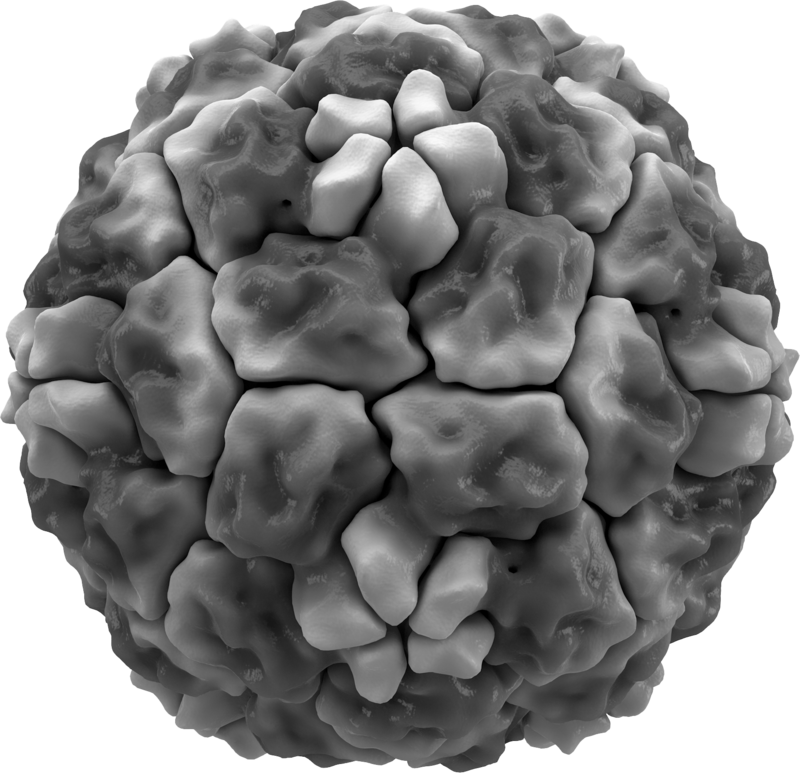Rhinovirus in Perspective: What Everyone Should Know About This Common Virus

Ever wondered why you get the common cold? The common cold, which affects millions every year, is caused by a virus known as the Rhinovirus. This virus, part of the respiratory virus family, infects the respiratory tract and, notably, only reproduces and survives within a host—without a host, it is inert.
Structure and Classification
The Rhinovirus contains a single-stranded RNA genome with a positive polarity, classifying it as a non-segmented virus. Its nucleocapsid is icosahedral in shape and it is non-enveloped. Lacking a virion polymerase, Rhinovirus is part of the picornavirus family. The high prevalence of the common cold can be attributed to the virus’s vast array of serotypes—over 100—each requiring a specific immune response. Additionally, Rhinovirus replicates best at a temperature of 32°C, which is why it typically infects the nose and conjunctiva, areas that have similar temperatures. Its host range is limited to humans and chimpanzees.
Transmission and Mutation
The Rhinovirus spreads through aerosol droplets transmitted person-to-person or by indirect contact (e.g., touching contaminated objects). Studies indicate that infection rates increase in the fall and winter, though the reason remains unclear. The virus’s rapid mutation rate, with different serotypes dominating each season, contributes to the persistence of the common cold, as immunity to one serotype does not protect against others.
How Rhinovirus Infects the Host
Upon entering the host through the nose, the Rhinovirus primarily infects the upper respiratory tract due to its preference for cooler temperatures (around 32°C) compared to the lower respiratory tract. The infection process begins when the virus attaches itself to cell surface receptors, specifically the intercellular adhesion molecule-1 (ICAM-1). The virus then enters the cytoplasm, sheds its capsid, and releases RNA, which functions as mRNA, translating into a large polypeptide that is cleaved by virus-encoded protease into various proteins needed for RNA replication.
Following RNA replication, the capsid proteins and RNA genome assemble to form new virus particles. These new viruses accumulate in the cell cytoplasm and are released upon cell death, spreading to infect other cells and perpetuating the cycle.
Symptoms and Diagnosis
The incubation period for the Rhinovirus is typically 2–4 days, followed by symptoms including sneezing, nasal discharge, sore throat, cough, and headache. Some individuals experience systemic symptoms like chills. The illness generally lasts about one week. However, these symptoms are not exclusive to Rhinovirus; other respiratory viruses such as coronavirus, adenovirus, influenza C virus, and Coxsackie virus can also cause similar symptoms.
To differentiate Rhinovirus from other respiratory viruses, a PCR-based laboratory diagnosis can be performed on respiratory tract specimens, identifying specific RNA and enabling accurate diagnosis. Serological testing is generally avoided due to the high number of serotypes.
Treatment and Prevention
Currently, there are no specific treatments or vaccines for the Rhinovirus due to the vast number of serotypes. High doses of vitamin C have minimal preventive effects against Rhinovirus-induced colds, and zinc gluconate lozenges, although available, have uncertain efficacy.
While there is no cure for the common cold, understanding the Rhinovirus helps us make informed choices during cold season. Regular handwashing and proper hygiene practices remain essential in preventing the spread of this persistent virus.
Similar Post You May Like
-

CFCs, HFCs and their long, troubled history
At its peak, the ozone hole covered an area 7 times larger than the size of Europe, around 29.9 million km2, and was rapidly expanding
-

The Origin of Universe: Deciding point where it all began!
Let us unravel and surf through the ideas throughout ages to understand what the universe and its origin itself was to its inhabitants across history.
-

The Artemis Program
Inspired by the Greek goddess of the Moon, twin sister to Apollo, the artimis program was named on 14 May 2019 by Jim Bridenstine.






